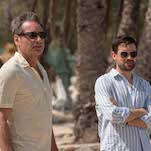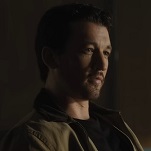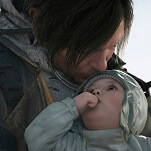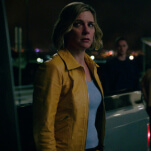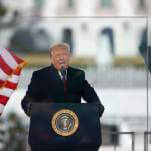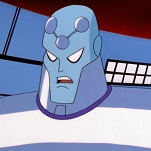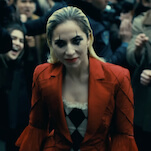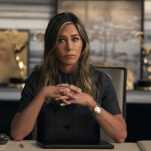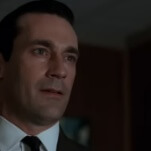25 Years Later: Remembering Giant Robo
Yasuhiro Imagawa’s 1992 OVA stands on the shoulders of giants.

On April 15th, 2004, Mitsuteru Yokoyama passed away in a Tokyo hospital from severe burn wounds he had sustained in a freak house fire earlier that day. The author of what is popularly credited as the first “Giant Robot” anime of its kind, Tetsujin 28-go (known in the West as Gigantor), news of Yokoyama’s death elicited a shockwave of grief throughout the entire anime industry.
From Mazinger Z creator Go Nagai to manga author Naoki Urasawa to Akira’s Katsuhiro Otomo, and even to Hirohiko Araki of the decidedly non-super robot Jojo’s Bizarre Adventure, Yokoyama was a much beloved mentor figure celebrated as the patriarch of one of the most defining and iconic genres of Japanese animation. Among this outpouring of condolences, perhaps none were more shaken by Yokoyama’s passing than Yasuhiro Imagawa, a director who spent no less than six years of his career producing one of, if not the most, memorable tributes to Yokoyama’s career yet. With July 22, 2017, marking the twenty-fifth anniversary of its first installment, there’s no better time than to look back on the storied origins, development and impact of one of the greatest Giant Robot animes of all-time: Giant Robo: The Day The Earth Stood Still.
At the height of Tetsujin 28’s popularity in the late ’60s, Yokoyama was commissioned by Toei Company to create a one-off giant robot manga that would serve as the basis for a live-action television drama. The result was Giant Robo, a series about a gigantic humanoid weapon wielded by a twelve-year-old super spy detective. Toei’s series, later rebroadcast and dubbed in English under the title Johnny Sokko and his Flying Robot, saw considerable success in the West and amassed something of a cult following among tokusatsu (think Power Rangers) aficionados of that time. It was only twenty-five years later that the series would see its first actual anime adaptation, a seven-part original video animation (OVA) helmed by Imagawa. A lifelong fan of Yokoyama’s work, Imagawa leapt at the opportunity to direct Giant Robo when he was offered the project by producer Yasuhito Yamaki, who approached him following the breakthrough success of his 1987 series Mr. Ajikko, a popular cooking anime which would notably go on to serve as the inspiration for the live-action culinary competition series Iron Chef. “Giant Robo is built on the foundations of my feelings for the manga and the live-action television series,” Imagawa said in a 1994 interview with Animerica. “[It’s] the animation that I’ve dreamed of making my entire life.”
Far away from now, “in a future yet to be,” Giant Robo: The Day The Earth Stood Still is set in a fragile yet idyllic world where the human race has abandoned all forms of petroleum and nuclear power in lieu of a mysterious new source of renewable energy dubbed simply as “The Shizuma Drive,” ushering forth a new age of technological prosperity. However, this tranquility is otherwise threatened by the machinations of Big Fire, a secret society of terrorists hell-bent on bending the entire human race to its own malicious ends. To combat this threat, the International Police Organization, along with its network of superpowered operatives known as “The Experts of Justice,” are formed to thwart Big Fire’s plans and apprehend its leaders. Among this elite squad of peacekeepers is Daisuku Kusama, a seemingly normal boy who nonetheless commands the force of the most powerful fighting robot on the planet, the eponymous Giant Robo.
The OVA’s premise is for the most part typical of what one would come to expect from a Giant Robot show, but one that’s otherwise elevated by the talents of those who brought it to fruition. The staff behind the creation of Giant Robo is a veritable who’s who of anime stardom, a critical mass of talented artists and animators who combined to create a masterpiece. With iconic mecha designs by Makoto Kobayashi (Venus Wars, Mobile Suit Zeta Gundam) Yokoyama’s charming yet budget-conscious designs are reforged and reimagined into a 30-meter tall, 600-ton hulking behemoth resembling a Japanese naval destroyer crossed with an Egyptian god. Storyboard and animation duties on several of the installments were handled by Kazuyoshi Katayama, who after leaving late in the OVA’s production amid significant delays, would go on to direct another cult classic, the 1999 neo-noir mecha series The Big O. All of this does not even take account Giant Robo’s celebrated score, an epic suite of Wagnerian compositions written and conducted by Battle Royalecomposer Masamichi Amano and performed by the Warsaw Philharmonic Orchestra. With all of these key players in place, Giant Robo was practically destined for greatness.
Even if Giant Robo weren’t one of the most impressive mecha animes of the early-to-late nineties—and it most certainly is—it would nevertheless be counted as one of the most audacious anime productions of its time. Announced initially as a series of 30-minute “episodes,” the OVA ballooned into a sprawling five-and-a-half hour epic released in seven parts between 1992 and 1998. During that time, Imagawa would work as a consultant screenwriter on the acclaimed 1997 television adaptation of Kentaro Miura’s Berserk and later direct Mobile Fighter G Gundam, a campy action adventure revival of the venerable Gundam franchise that’s equal parts lauded and reviled as one of the most influential and controversial series of that era. In a career studded with such milestones, Giant Robo stands as Imagawa’s magnum opus, a virtuosic production that grasps at something truly inspiring through merit of its ambition alone. The only thing more impressive than the OVA itself is the story of how nearly it never saw completion.
When Imagawa first signed on to the project, he was told that although he had the rights to the name, scenario and lead character of Yokohama’s original, his anime would not be allowed to use any of Giant Robo’s supporting characters from the manga or television show. While any other director might’ve balked at such a prospect, Imagawa flourished. To overcome this roadblock, and more than likely motivated by an indulgence of his fandom, Imagawa arranged a meeting with Yokohama himself to make a bold request. His solution was equal parts simple and inspired, a hail Mary pass born out of creative restraints that yielded one of the most serendipitous decisions in Giant Robo’s production. If he wasn’t allowed to use the series’ original cast, he would ask Yokoyama if he could instead repurpose characters from several of his other works and create a new story out of the sum of those parts. With his blessing, Imagawa pulled elements from such classic manga series as Babel II, Sally the Witch, Akakage, and perhaps Yokohama’s most prolific work outside of Tetsujin, his 60-volume manga rendition of the epic Chinese literary classic Romance of the Three Kingdoms. The result was a pastiche of wuxia and superheroism, hard-boiled saboteurs and teleporting monks, kung-fu action and giant robots—all combining to form one seamless whole. Every frame of the series was studiously crafted, every set piece more elaborate and exciting than the last. But what elevated the series above the glut of its OVA contemporaries is the heart that beat beneath the surface of its aesthetic. More than the flash and dash of its presentation, Giant Robo is an awesome work of Japanese futurism that doubles as not only a parable of the fraught relationship between fathers and their children but a coded allegory of the quiet fear and nebulous potential that typifies the post-nuclear age.






















